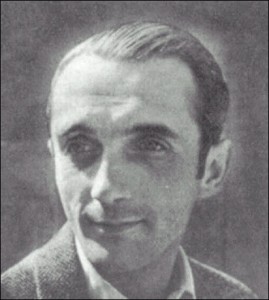The “Real” Indiana Jones? A Closer Look At Otto Rahn
I’ve already seen National Treasure 2 and with the new Indiana Jones movie coming out ( one of those flicks I’m certainly going to see asap ), I’ve come across a fascinating article on the Telegraph. Usually an excellent source for current news, they also run highly interesting topics every now and then.
Anyway, I thought this is pretty fitting since Harrison Ford is once again at it… The article talks about the inspiration behind the Indiana Jones movie: Otto Rahn, a Nazi archeologist who was obsessed with finding the holy grail.
Like Jones, Rahn was an archaeologist, like him he fell foul of the Nazis and like him he was obsessed with finding the Holy Grail – the cup reputedly used to catch Christ’s blood when he was crucified. But whereas Jones rode the Grail-train to box-office glory, Rahn’s obsession ended up costing him his life.
Â
Here was a man who entered into a terrible Faustian pact: he was given every resource imaginable to realise his dream. There was just one catch: in return, he had to find something that – if it ever existed – had not been seen for almost 2,000 years.
What we can say for sure is that Rahn was born in 1904 and at an early age became fascinated with the Holy Grail. At university he was inspired by the example of another German archaeologist, Heinrich Schliemann. Largely as a result of immersing himself in the Iliad, Schliemann had found what he believed to be the ruins of Troy on the western coast of Turkey.
Rahn decided that he was going to go one better: he would use the 13th-century epic Parsifal as his guide to finding the Holy Grail. Why did he think Parsifal would lead him to his goal? This is a tricky one – and, as with anything to do with the Holy Grail, one should never underestimate the power of wishful thinking.
Â
But Rahn was also a serious scholar and the more he pored over Parsifal, the more he became convinced that the Cathars, the medieval Christian sect, held the secret to the Grail’s whereabouts. In 1244, shortly before the Cathars were massacred by a Catholic crusade, three Cathar knights had apparently slipped over the wall of Montsegur Castle in the Languedoc area of France. With them, hidden in a hessian bag, was a cup reputed to be the Holy Grail.
Rahn arrived at Montsegur in the summer of 1931. He didn’t find the Grail, but he did find a complex of caves nearby that the Cathars had used as a kind of subterranean cathedral. If he’d been of a less optimistic bent, he might have shrugged his narrow shoulders and gone home. Rahn, however, wasn’t the going-home type. Certain he was on the right track, he wrote a book called Crusade Against the Grail in which he described his quest.
It was at this point that Rahn met his Mephistopheles. One day in 1933 he received a mysterious telegram offering him 1,000 reichsmarks a month to write the sequel to Crusade Against the Grail. The telegram was unsigned, but he was instructed to go to an address in Berlin – 7 Prinz Albrechtstrasse.
When he arrived, he was understandably surprised to be greeted by the grinning figure of Heinrich Himmler, the head of Hitler’s SS. Not only had Himmler read Crusade Against the Grail; he’d virtually committed the thing to memory. For the first time in his life Rahn met someone even more obsessed with finding the Grail than he was. Indeed, so confident was Himmler of finding the Grail that he’d already prepared a castle – Wewelsburg in Westphalia – for its arrival. In the basement, surrounded by busts of prominent Nazis, was an empty plinth where the Grail would go.
Â
Â
If you’re interested, check out the full article over at the Telegraph.co.uk. Who knows how many people actually lost their life looking for the holy grail and personally I doubt that is actually exists. Perhaps it does but even if that is the case, what are the chances of finding it?
It certainly is a piece worth reading.Â
